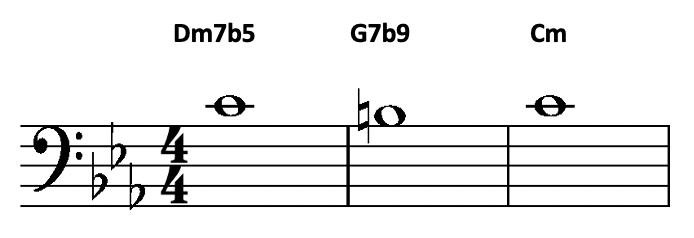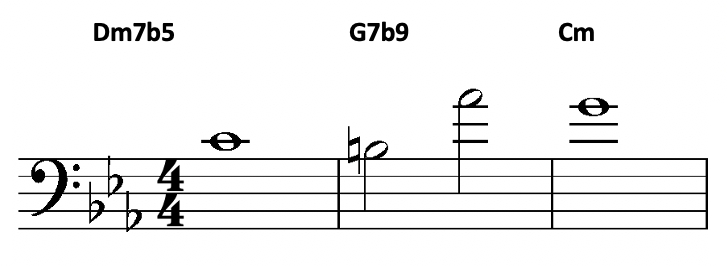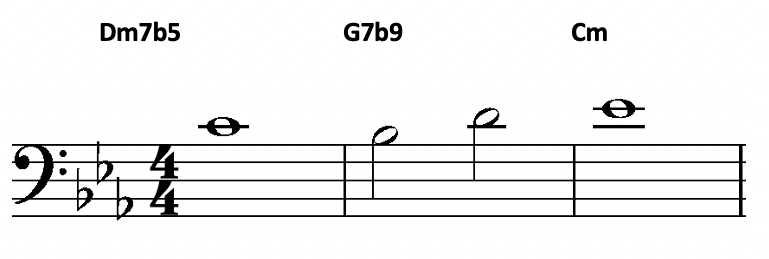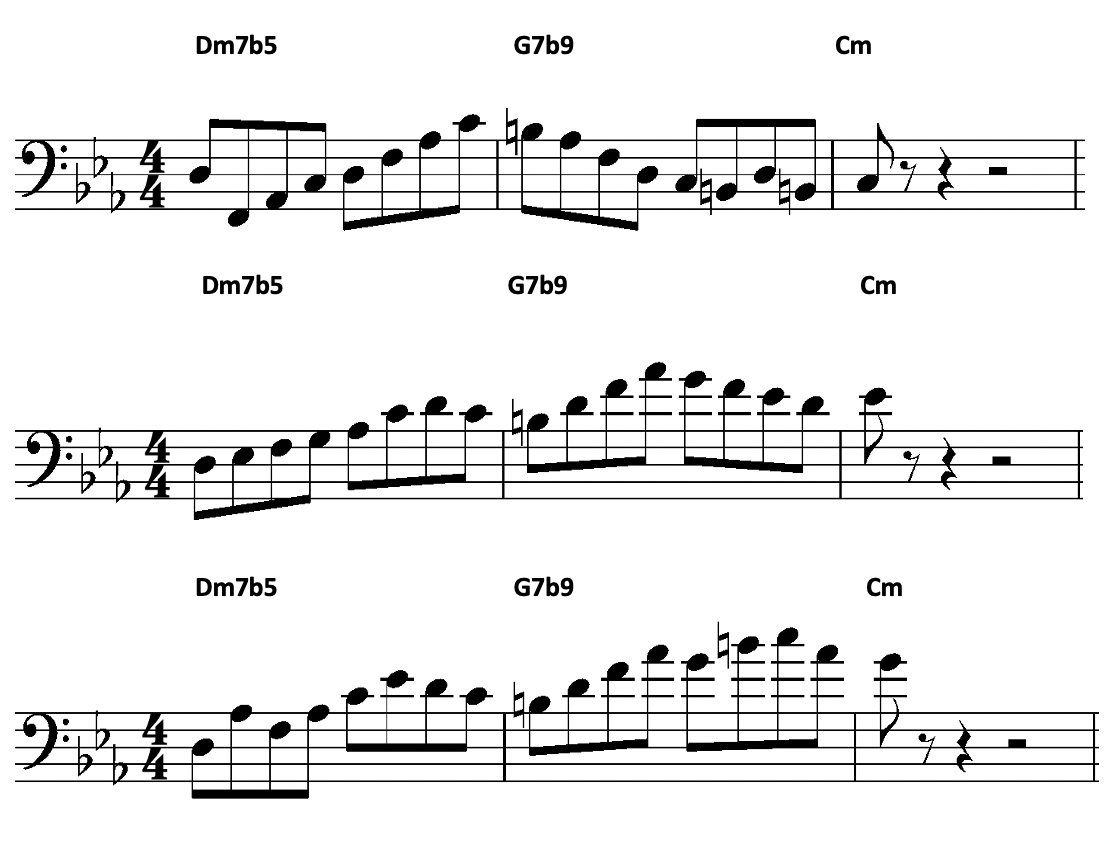My previous articles entitled “Guide Tones” and “The Double Chromatic Approach” introduced the concept of playing melodic ideas over chord changes that follow a system. The name of the game was to create a library of phrases that resolve from one chord to the next using guide tones. It’s very important for you to write down your ideas in a transcription book. If the phrases are not written down and committed to memory through repetition, there is a chance they will be forgotten.
The minor version of the II V I progression consists of the chords IIm7b5, V7b9, and Im. This minor cadence is used in hundreds of Real Book tunes such as “Blue Bossa,” “Black Orpheus,” and “How Insensitive.” This specific chord progression follows the same principles of guide tone resolution that are used with the major II V I progression. The example below illustrates this concept.

You can also resolve guide tones from b9 degree of the V7b9 by a half step down to the 5th degree of the Im chord.

The 5th degree of the V7b9 chord also resolves up a half step up to the flat 3rd degree of the Im chord.

If we were to analyze the scales to use over Dm7b5- G7b9- Cm, the general tonality would be Eb major (C natural minor). The G7b9 contains a B natural which is non-diatonic to the key. This chord would use the C harmonic minor scale.

The following examples connect scales, arpeggios, and guide tones to create melodic ideas over the Dm7b5- G7b9- Cm progression.

The next example uses the double chromatic approach. The 3rd degrees of both the G7b9 and the C minor chord are being approached by two notes below in a chromatic fashion.

Review the previous articles mentioned above in sequence before moving on to these minor progressions. Remember to write out all of your ideas and commit them to memory. Good luck!
Bassist James Rosocha is an educator, composer, and touring musician.
He can be heard on the last nine albums by jazz fusion guitarist B.D. Lenz or on his debut CD “Avalon.”